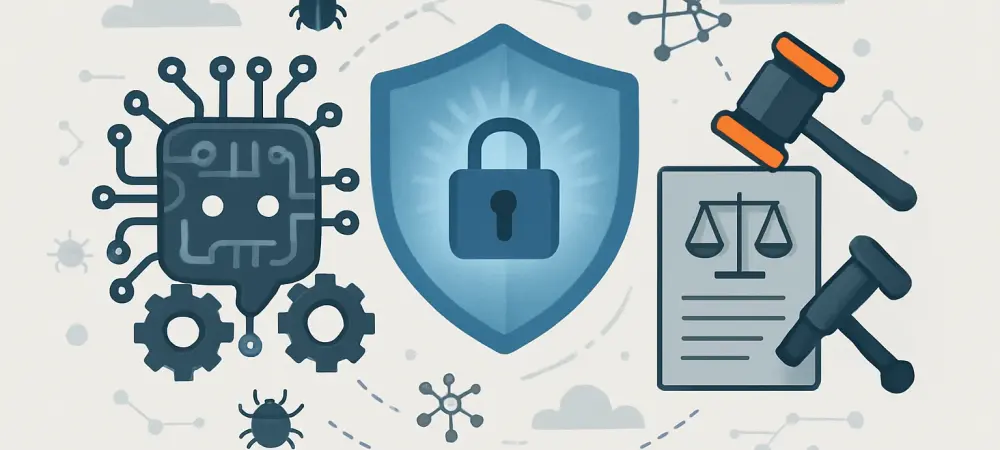Setting the Stage: The AI Regulation Imperative
In 2025, the global artificial intelligence (AI) market stands at a staggering crossroads, with tools like DeepSeek, a prominent Chinese AI platform, driving unprecedented business efficiency while simultaneously igniting a firestorm of cybersecurity concerns. Chief Information Security Officers (CISOs) across the United Kingdom are sounding the alarm, with a striking 81% advocating for immediate government oversight to curb the risks of these powerful technologies. This market analysis dives into the heart of this pressing issue, exploring why security leaders view unregulated AI as a potential trigger for a national cyber crisis. By examining current trends, data from industry reports, and future projections, this piece aims to uncover the forces shaping the AI landscape and the urgent need for regulatory frameworks to safeguard economic stability.
Market Dynamics: Unraveling AI’s Dual Nature
Explosive Growth Meets Escalating Risks
The AI sector has witnessed remarkable expansion in 2025, with platforms like DeepSeek leading the charge in transforming industries through automation and data-driven insights. Market valuations for AI technologies have soared, fueled by their ability to optimize operations and enhance decision-making processes. However, this rapid growth masks a darker undercurrent: the cybersecurity vulnerabilities these tools introduce. According to a comprehensive UK industry report surveying 250 CISOs from large organizations, 60% of security leaders anticipate a sharp rise in cyberattacks directly tied to AI proliferation. This duality—innovation paired with risk—defines the current market, creating a tense environment where businesses must balance adoption with caution.
Cyber Threat Evolution: AI as a Weapon
Delving deeper into market challenges, the potential for AI to be weaponized by malicious actors has emerged as a dominant concern. The speed and precision of AI systems in identifying system weaknesses make them a formidable tool for cybercriminals, capable of executing attacks faster than human defenders can respond. High-profile breaches in recent months, affecting major UK retailers, highlight the hostile threat landscape that organizations already navigate. For market stakeholders, this trend signals a shift toward a more dangerous era of cyber warfare, where AI-driven attacks could cripple critical infrastructure or lead to massive data losses, impacting not just individual firms but entire sectors.
Governance Challenges in a Booming Market
Another critical market trend is the governance and privacy strain imposed by AI technologies. The same industry report notes that 60% of CISOs struggle with the integration of AI tools due to their opaque decision-making processes, often referred to as the “black box” problem. This opacity complicates compliance with stringent data protection regulations like GDPR, raising the risk of unintentional data exposure and legal repercussions. As the AI market continues to expand, the absence of clear governance standards threatens to undermine consumer trust and expose businesses to reputational damage, underscoring the need for structured oversight to maintain market integrity.
Data Insights: Organizational Readiness and Market Gaps
Preparedness Deficit Across Industries
Analyzing market readiness reveals a significant gap in organizational capacity to counter AI-driven threats. Data indicates that 46% of senior security leaders in the UK admit their teams lack the tools and training to manage these emerging risks effectively. This unpreparedness varies across market segments, with smaller enterprises particularly vulnerable due to limited resources compared to larger corporations. Such disparities highlight a fragmented market landscape, where the pace of AI adoption often outstrips the development of defensive capabilities, leaving substantial portions of the economy exposed to potential disruptions.
Strategic Responses Shaping Market Behavior
Despite these challenges, market players are not standing still. A notable 34% of CISOs have implemented outright bans on certain AI tools to mitigate immediate risks, reflecting a cautious approach to market engagement. Simultaneously, proactive strategies are gaining traction, with 84% of organizations planning to hire AI specialists over the next two years from 2025 to 2027. Additionally, 80% are investing in executive-level AI training to build internal expertise. These dual responses—defensive restrictions and forward-looking investments—illustrate a market in transition, grappling with how to harness AI’s potential while minimizing its pitfalls.
Future Projections: Navigating an Uncertain AI Market
Rising Threats and Regulatory Momentum
Looking ahead, market forecasts suggest an intensification of AI-specific cyber threats, with attackers likely to exploit machine learning for sophisticated phishing and automated exploits. The economic cost of inaction could be immense, with experts estimating billions in potential losses from unaddressed vulnerabilities. On the regulatory front, there is growing momentum for national frameworks, with the UK government facing pressure to align with international standards like the EU’s AI Act. These projections point to a market poised for significant transformation, where regulatory clarity could become a key differentiator in fostering secure innovation.
Economic Implications and Competitive Edge
From an economic perspective, the AI market’s trajectory hinges on balancing risk and reward. Unregulated growth could lead to widespread disruptions, eroding investor confidence and stunting sector development. Conversely, strategic regulation could position the UK as a leader in safe AI adoption, attracting global investment and talent. Market analysts speculate that AI might evolve into a double-edged sword, wielded by both attackers and defenders in an ongoing battle of innovation. The challenge lies in crafting policies that evolve alongside technology, ensuring the market remains a space for progress rather than peril.
Reflecting on the Path Forward: Strategic Lessons from 2025
Looking back on the market analysis of AI tools like DeepSeek in 2025, it becomes evident that the intersection of rapid technological advancement and cybersecurity risk demands urgent attention. The pervasive concerns among UK CISOs, backed by data showing widespread unpreparedness and escalating threats, paint a picture of a market teetering on the edge of crisis. Yet, amidst this tension, businesses demonstrate resilience through strategic investments in skills and cautious adoption practices. For industry stakeholders moving forward, the lesson is clear: prioritize collaboration with policymakers to establish robust regulatory frameworks that protect without stifling growth. A practical next step involves fostering public-private partnerships to share threat intelligence and standardize AI deployment protocols, ensuring that future market expansions are built on a foundation of security and trust.

